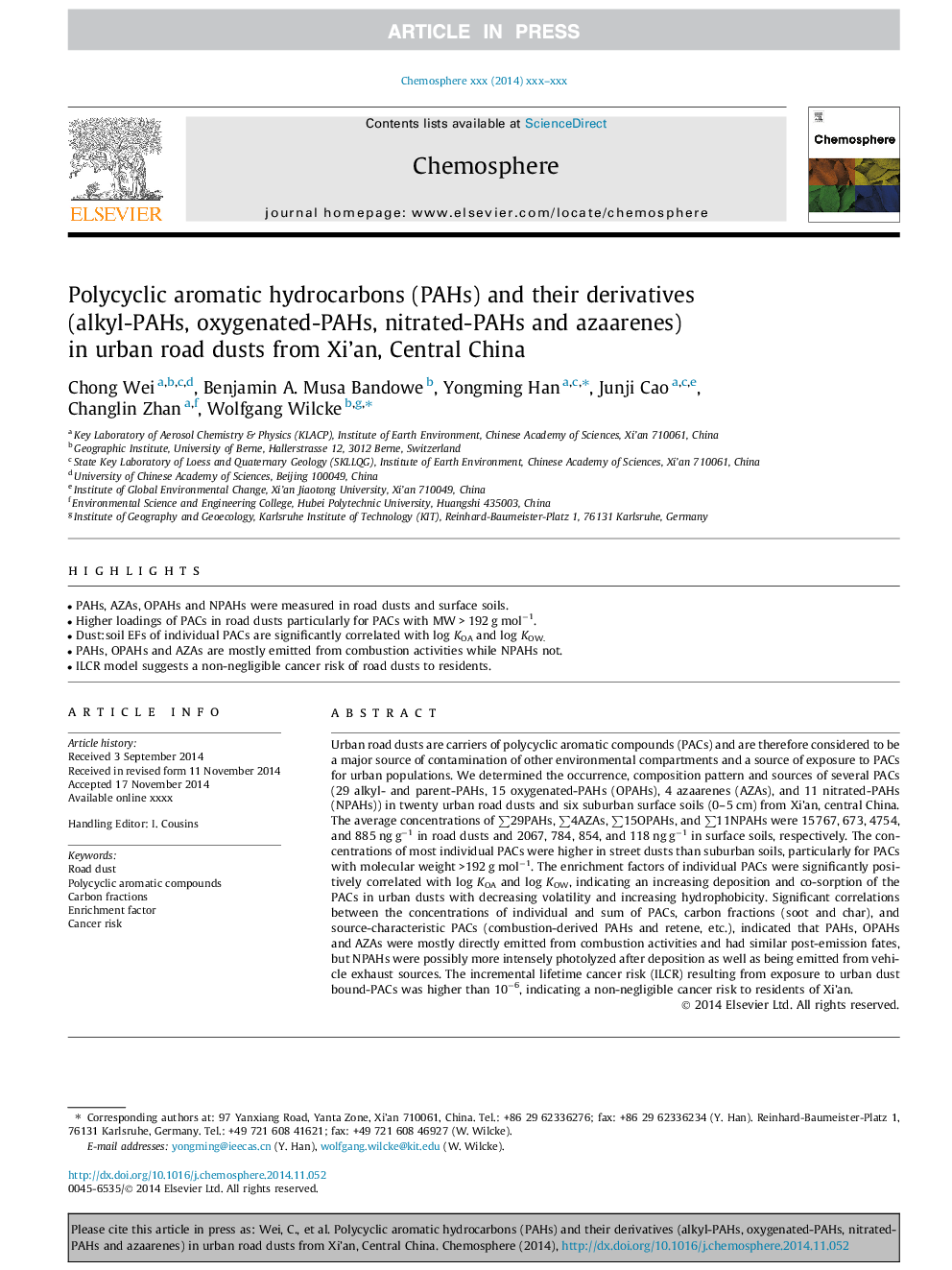| Article ID | Journal | Published Year | Pages | File Type |
|---|---|---|---|---|
| 6307752 | Chemosphere | 2015 | 9 Pages |
Abstract
Urban road dusts are carriers of polycyclic aromatic compounds (PACs) and are therefore considered to be a major source of contamination of other environmental compartments and a source of exposure to PACs for urban populations. We determined the occurrence, composition pattern and sources of several PACs (29 alkyl- and parent-PAHs, 15 oxygenated-PAHs (OPAHs), 4 azaarenes (AZAs), and 11 nitrated-PAHs (NPAHs)) in twenty urban road dusts and six suburban surface soils (0-5 cm) from Xi'an, central China. The average concentrations of â29PAHs, â4AZAs, â15OPAHs, and â11NPAHs were 15 767, 673, 4754, and 885 ng gâ1 in road dusts and 2067, 784, 854, and 118 ng gâ1 in surface soils, respectively. The concentrations of most individual PACs were higher in street dusts than suburban soils, particularly for PACs with molecular weight >192 g molâ1. The enrichment factors of individual PACs were significantly positively correlated with log KOA and log KOW, indicating an increasing deposition and co-sorption of the PACs in urban dusts with decreasing volatility and increasing hydrophobicity. Significant correlations between the concentrations of individual and sum of PACs, carbon fractions (soot and char), and source-characteristic PACs (combustion-derived PAHs and retene, etc.), indicated that PAHs, OPAHs and AZAs were mostly directly emitted from combustion activities and had similar post-emission fates, but NPAHs were possibly more intensely photolyzed after deposition as well as being emitted from vehicle exhaust sources. The incremental lifetime cancer risk (ILCR) resulting from exposure to urban dust bound-PACs was higher than 10â6, indicating a non-negligible cancer risk to residents of Xi'an.
Related Topics
Life Sciences
Environmental Science
Environmental Chemistry
Authors
Chong Wei, Benjamin A. Musa Bandowe, Yongming Han, Junji Cao, Changlin Zhan, Wolfgang Wilcke,
